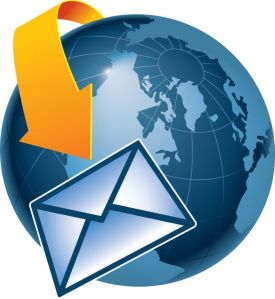While I’m certainly not an expert in e-campaigning, occasionally in my role I get asked to share (or offer to share!) some thoughts about what makes an effective campaign email.
I did this last week while in Geneva with Micah Challenge campaigners from across Europe, or before Christmas with some inspiring campaigners involved in this campaign in Brazil work to stop the sexual exploitation of children during the 2014 World Cup. In both cases, the campaigns didn’t have huge budget or capacity, so they were looking for some simple and actionable ideas.
From working alongside some fantastic e-campaigners over the years I’ve picked up a few tops tips, so here are my top 5 thoughts about what makes a good campaign email. I’d welcome comments or links to other useful resources.
1 – Send your message at the right time – There is a whole bank of evidence about when emails are open and action and while I’m sure this is likely to differ a little from country to country and issue to issue, this research from Mail Chimp is a good place to start. They looked at the open rates for millions of emails and found that more messages were opened between 2-5pm and that midweek lead to the highest open rates, with the weekend, perhaps predictably the worse time.
2 – Opened emails are read emails – The reality is that if your email remains unopened in someones inbox its not going to lead to the action that you’d like to see. As such it’s key to think about the subject line that you use and the ‘from’ field.
Go for a subject line that intrigues the reader into open in but also let’s them know what to expect, and make your ‘from’ field from a real person not an organisation, even if you end up going for ‘Joe Bloggs (Make Poverty History)’ it making an effort toward greater personalisation.
3 – Be clear about what you want your email to achieve. To many email updates sent don’t have a clear objective to them, before you write it be clear what one thing you want to achieve from the message. There is a reason why organisations like Avaaz and 38 Degrees only ask you to do one thing in their email message, because they’ve found it’s likely to lead to a better response rate.
While making lots of different asks might make it sound like your campaign has got alot going on, in reality the more choices you give people the more likely they’ll choose not to do any of them. They become paralysed by choice and overwhelmed by the options, so choose to do none.
4 – People scan read emails. Just like webpages, people interact with emails in very different ways to letters or printed documents, so big blocks of dense text aren’t likely to work. In general, people scan a message, so using short paragraphs, bold and underline is key to help people navigate around the email and understand what you’re asking them to do. (For more have a look at this evidence drawn from research into using eye-tracking software into how people read emails)
Try to make the ‘ask’ more than once in your message, and don’t forget that for some strange reason the ‘PS’ is one of the most read lines in any email, so make use of it!
5 – The metrics matter – The best way of knowing if people are actually reading or responding to your emails is to use a website like MailChimp or CharityeMailto send out your messages. They’ll provide you with a user-friendly ‘dashboard’ of what people are actually doing with your messages by measuring open and click-through rates. Over time you’ll be able to build up a better picture of what your audience responds to and what they don’t.

If you’ve got the time invest in testing different subjects, from fields, etc. Sites like MailChimp make this easy to do, as well as taking the hard work out of managing your e-lists as they manage the subscribe/unsubscribe function.
I’m aware that I’m just skimming the surface of a vast bank of evidence, and haven’t even written about how to compose the content of a good action email (have a look at this for a good summary).
I know that a few e-campaigning gurus read this blog so I’d especially encourage them to comment or share other useful links.